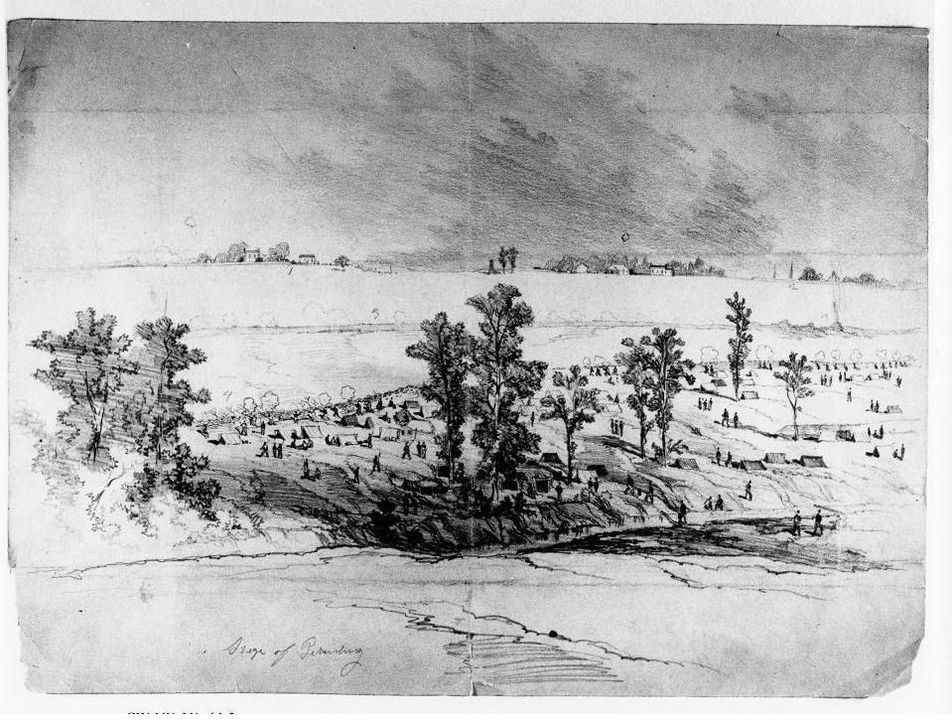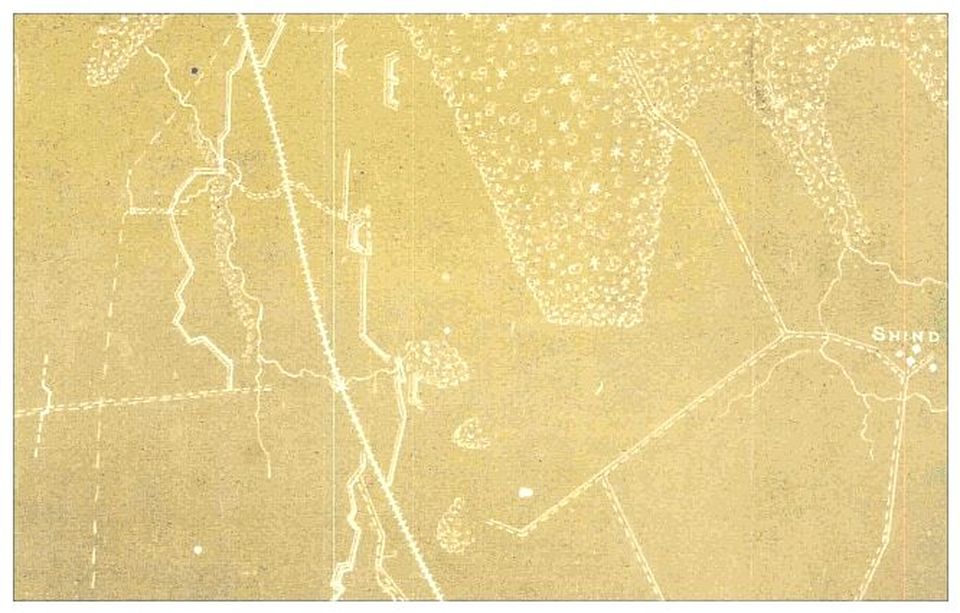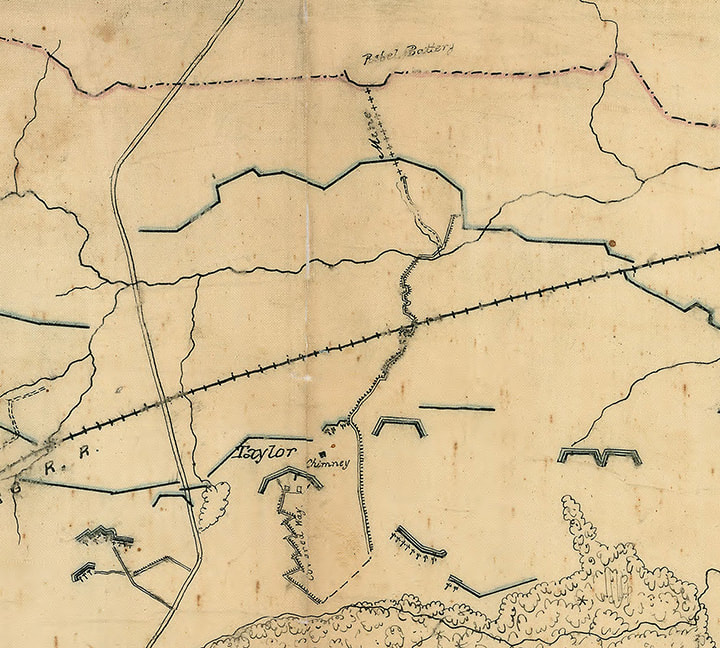The "Horseshoe": Advanced U.S. Line on Blandford Hill, later site of the Crater.
"The line in front of Fort Morton, where our brigade had fought on the evening of the 18th of June, was pushed up nearer to the rebel line than at any other point, being at one period only 125 yards from that line; and this advanced part of our line was commonly called by our men “the horseshoe." Directly in front of “the horseshoe” and opposite to Fort Morton, upon a swell of ground arising some thirty-five or forty feet above Taylor’s Creek, was a Confederate fort, mounting four pieces of artillery, occupied by Pegram’s battery, supported by two battalions of South Carolina infantry. This fort or battery formed a salient in the Confederate line, known as “Elliott’s Salient,” pushed forward beyond the general trend of their line, and we who had occupied the “horseshoe” during the month of July, were well aware that a tunnel or mine had been run from the bank of Taylor’s Creek, inside our line, under this fort."
The Story of the Twentieth Michigan Infantry, Byron M. Cutcheon, 1904, pg. 138.
The Story of the Twentieth Michigan Infantry, Byron M. Cutcheon, 1904, pg. 138.
Wednesday [June] 22nd [1864]
At 1 this morning we went out on the front line, relieving the occupants of the “horseshoe”, who in turn fell back to the rear, occupying our breastworks in the woods. The works are now strong enough to resist cannonballs, but the work goes on. One half of our boys stand ready to repel attack, and keep up skirmish firing, while the other half keeps throwing out the sandy soil to add greater strength to our position. We now have two well made lines, a front and rear, from ¼ to ½ a mile apart, which we are to occupy alternately. As daylight came, work was suspended, as it was impossible to expose our persons and not endanger our lives….
Diary of John Frederic Holahan, 45th Pennsylvania Volunteers. Manuscript on file at Petersburg National Battlefield.
At 1 this morning we went out on the front line, relieving the occupants of the “horseshoe”, who in turn fell back to the rear, occupying our breastworks in the woods. The works are now strong enough to resist cannonballs, but the work goes on. One half of our boys stand ready to repel attack, and keep up skirmish firing, while the other half keeps throwing out the sandy soil to add greater strength to our position. We now have two well made lines, a front and rear, from ¼ to ½ a mile apart, which we are to occupy alternately. As daylight came, work was suspended, as it was impossible to expose our persons and not endanger our lives….
Diary of John Frederic Holahan, 45th Pennsylvania Volunteers. Manuscript on file at Petersburg National Battlefield.
 Recto: "Siege of Petersburg // 1 // 2 // 3 // 4."
Verso: "View of the lines of the two contending armies before Petersburg from Fort Milroy [sic, actually Fort Morton] // 1 - second line of Rebel defense which the union troops failed to carry // 2 - Petersburg // 3 - Exploded mine and rebel line // 4 - Union line." Note: the railroad cut running across the foreground.
Recto: "Siege of Petersburg // 1 // 2 // 3 // 4."
Verso: "View of the lines of the two contending armies before Petersburg from Fort Milroy [sic, actually Fort Morton] // 1 - second line of Rebel defense which the union troops failed to carry // 2 - Petersburg // 3 - Exploded mine and rebel line // 4 - Union line." Note: the railroad cut running across the foreground.




